Flukes and tapeworms are both parasitic flatworms that attach to their victims for feeding. However, while the fluke feeds through its …........, the tapeworm feeds through its ………
To answer the question regarding how flukes and tapeworms feed, follow these steps:
1. Identify the Organisms: Recognize that both flukes and tapeworms are types of parasitic flatworms belonging to the phylum Platyhelminthes.
2. Understand the Feeding Mechanism of Flukes: Flukes are equipped with a mouth that they use to ingest nutrients from their host. They attach to their host and feed through this mouth.
3. Understand the Feeding Mechanism of Tapeworms: In contrast, tapeworms do not have a mouth. Instead, they absorb nutrients directly through their body surface, which is covered in microvilli that increase the surface area for absorption.
4. Fill in the Blanks: Based on the information gathered, you can fill in the blanks in the question. The fluke feeds through its mouth, while the tapeworm feeds through its body surface.
Final Answer: Flukes feed through their mouth, while tapeworms feed through their body surface.
---
Topper's Solved these Questions
- ANIMAL KINGDOMBOOK - ICSECHAPTER - ANIMAL KINGDOMEXERCISE - Test Your Progress (State whether the following statements are true or false )
10 Videos
- ANIMAL KINGDOMBOOK - ICSECHAPTER - ANIMAL KINGDOMEXERCISE - Test Your Progress (Matching)
3 Videos
- ANIMAL KINGDOMBOOK - ICSECHAPTER - ANIMAL KINGDOMEXERCISE - Ncert Exercises (Differentiate between )
11 Videos
- ANATOMY OF FLOWERING PLANTS - PLANT TISSUESBOOK - ICSECHAPTER - ANATOMY OF FLOWERING PLANTS - PLANT TISSUESEXERCISE - REVIEW QUESTIONS (LONG ANSWER TYPE QUESTIONS)
20 Videos
- BIOLOGICAL CLASSIFICATIONBOOK - ICSECHAPTER - BIOLOGICAL CLASSIFICATIONEXERCISE - Ncert Exercises (Differentiate Between )
24 Videos
Similar Questions
Taenia solium attaches itself to the intestinal wall by means of scolex through its
View SolutionA partical of mass m attached with a massless spring of natural length l and stiffness constant k is releaased from rest from the horizontal positon of the relaxed spring.
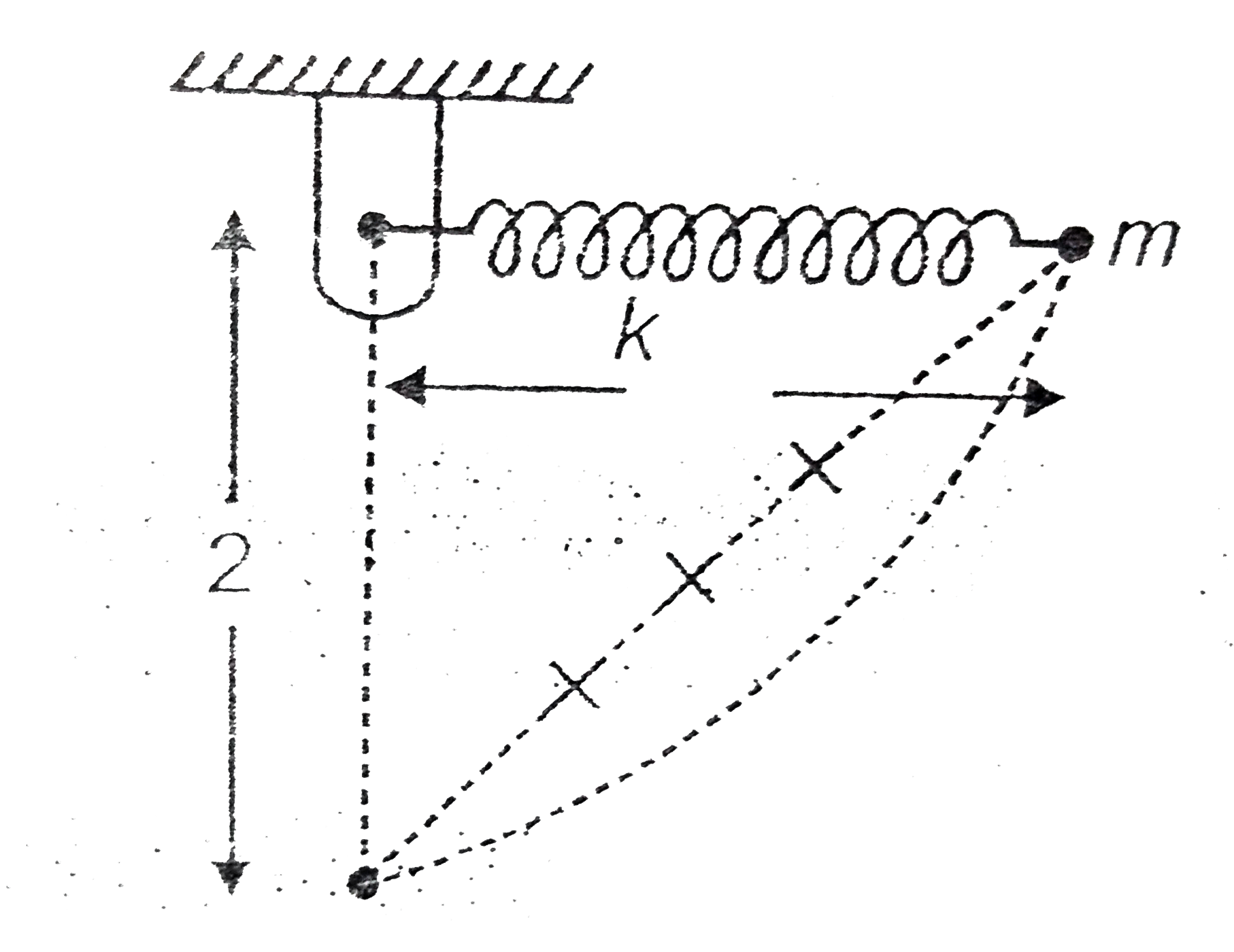
When the particle passes through its lowest point, the maximum length of the spring bocomes 2l find the
(A) Speed of the particle at its lowest point
(B) Acceleration of the particle at its lowest position.
View SolutionA particle of mass m attached with a massless spring natural length l and stiffness k is released from rest from the horizontal position of the relaxed spring. When the particle passes through its lowest point, the maximum length of the spring becomes 2l. Find the:
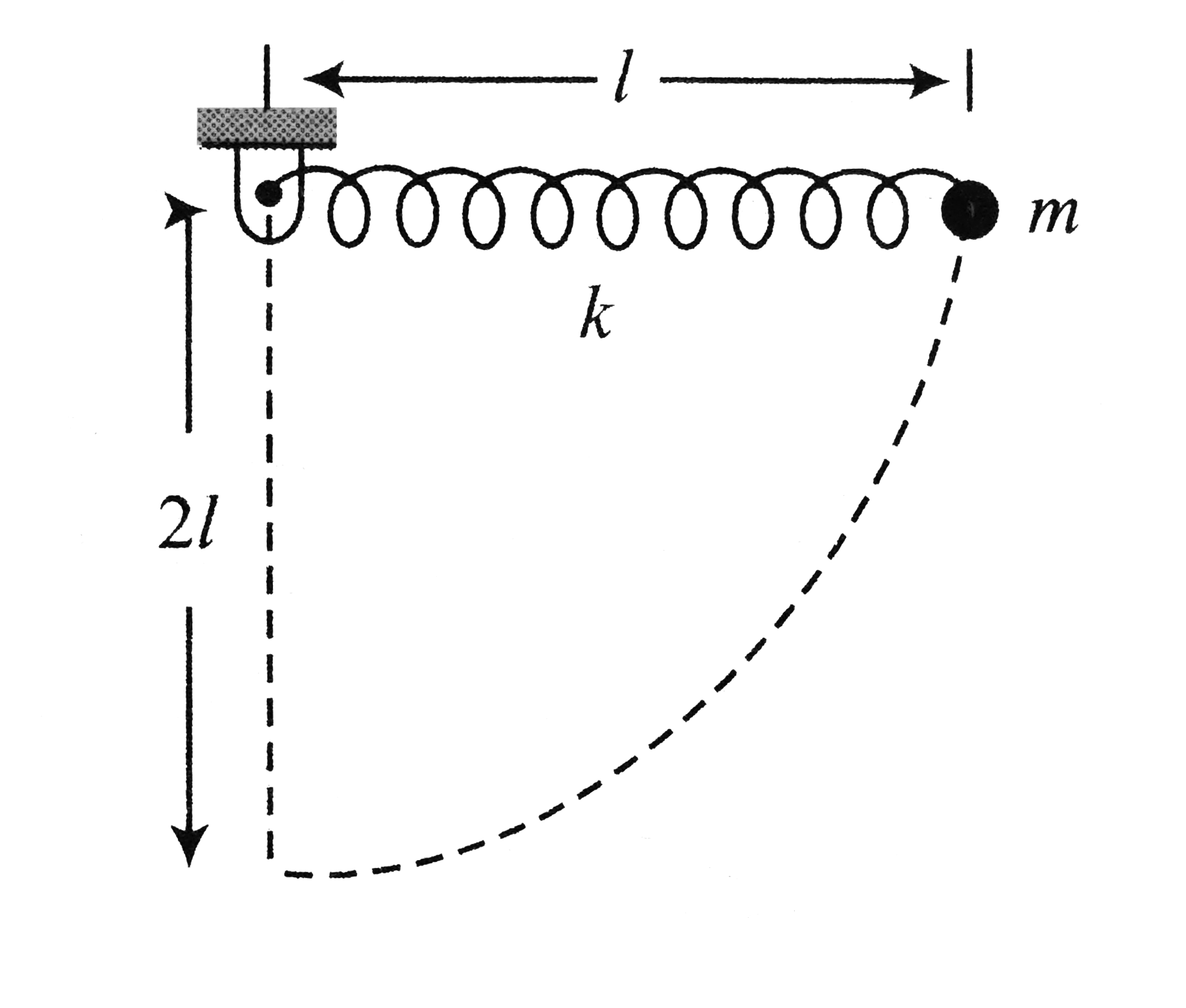
a. speed of the particle at its lowest point.
b. acceleration of the particle at its lowest position.
View SolutionYou have heard about several insectivorous plants that feed on insects. Nepenthes or the pitcher plant is one such example, which usually gorws in shallow water or in marsh lands. What part of the plant is modified into a pitcher ? How does this modification help the plant for food even through it can photosynthesise like any other green plant ?
View Solution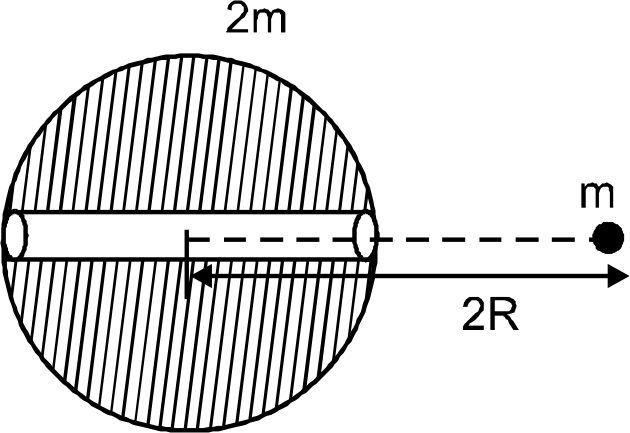
A solid spherical planet of mass 2m and radius 'R' has a very small tunnel along its diameter. A small cosmic particle of mass m is at a distance 2R from the centre of the planet as shown. Both are initially at rest, and due to gravitational attraction, both start moving toward each other. After some time, the cosmic particle passes through the centre of the planet. (Assume the planet and the cosmic particle are isolated from other planets)
View SolutionA flywheel of radiiis 10 cm mounted so as to rotate about a horizontal axis through its centre. A string of negligible mass wrapped round its' circumference carries' a mass of 200 gm attached to its free end, when let fall the mass descends through 100 cm is 5 s. Calculate the angular acceleration and the moment of inertia of the flywheel.
View SolutionA wheel of moment of inertia I and radius r is free to rotate about its centre as shown in figure. A string is wrapped over its rim and a block of mass m is attached to the free end of the string. The system is released from rest. Find the speed of the block as it descends through a height h.

View SolutionA disc of mass m and radius r is free to rotate about its centre as shown in the figure. A string is wrapped over its rim and a block of mass m is attached to the free end of the string. The system is released from rest. The speed of the block as it descends through a height h, is :-
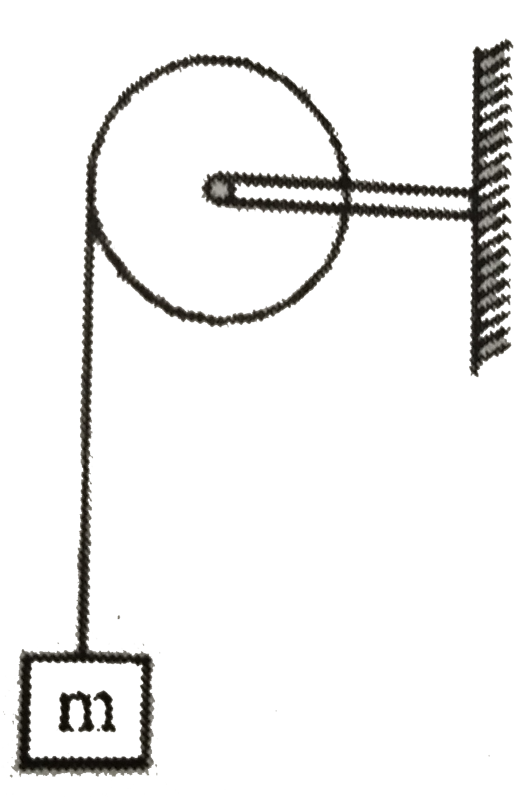
View SolutionA rectangular loop of sides 10 cm and 5 cm with a cut is stationary between the pole pieces of an electromagnet.
The magnetic field of the magnet is normal to the loop. The current feeding the electromagnet is reduced, so that the field decreased from its initial value of 0.2 T at the rate of 0.02Ω. If the cut is joined and the loop has a resistance of 2.0Ω, then the power dissipated by the loop as heat is
View SolutionAn electrometer consister of a fixed vertical metal bar OB at the top of which is attached a thin rod OA which gets deflected from the bar under the action of an electric charge (fig.). The rod can rotate in vertical plane about fixed horizontal axis passing through O. The reading is taken on a quadrant graduated in degrees. The length of the rod is l and its mass is m. what will be the charge when the rod of such an electrometer is deflected through an angle α in equilibrium. Find the answer using the following two assumptions :
The charge on the electrometer is equally distributed between the bar & the rod and the charges are concentrated at point A on the rod & at point B on the bar.
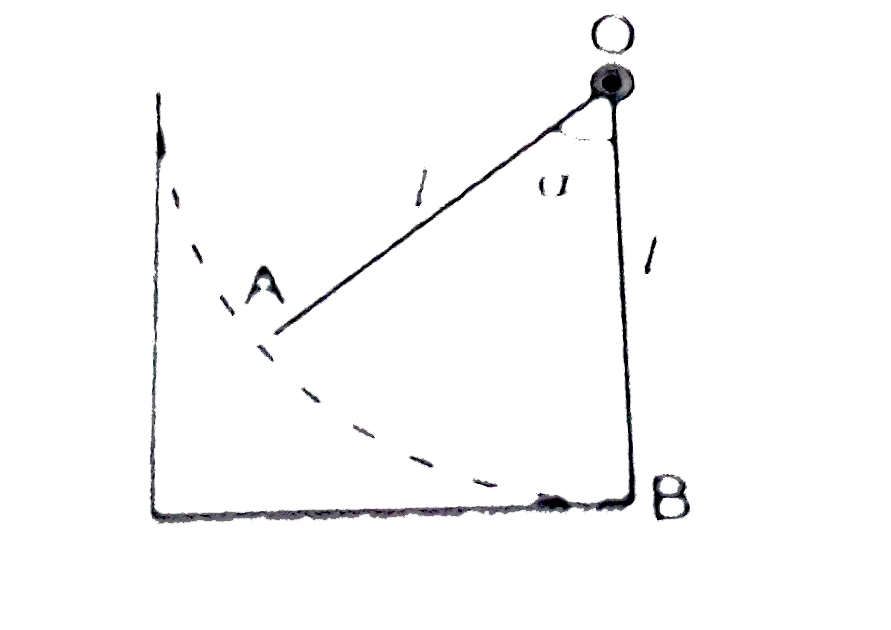
View Solution
